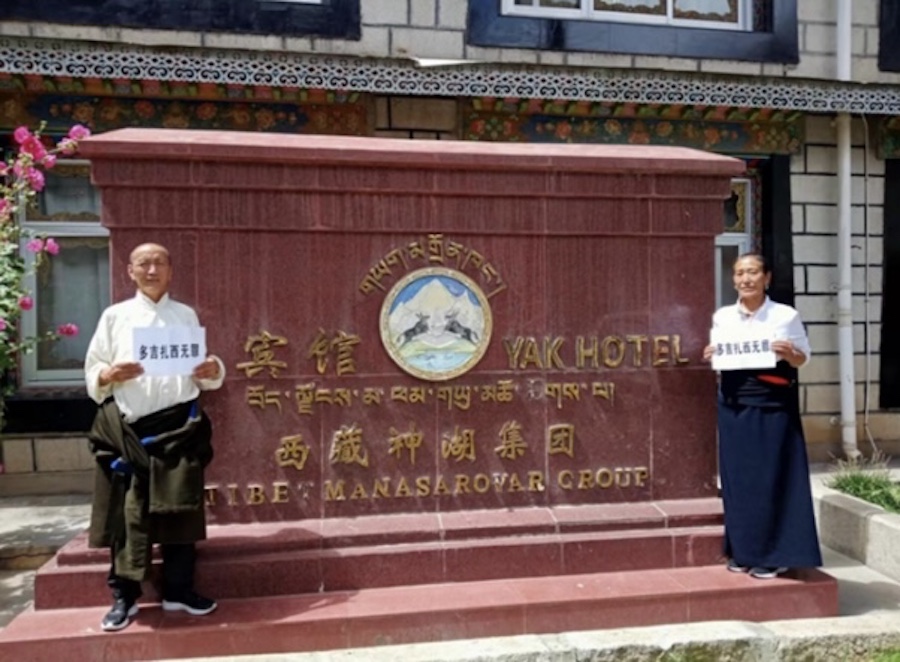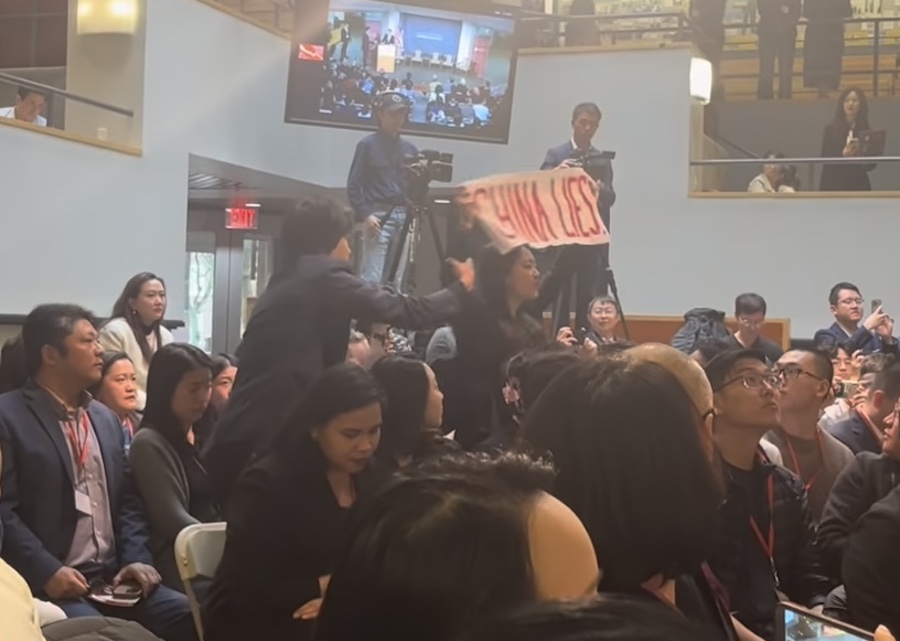By Tsewang Dorji
 Tawang is one of the most important districts of the Indian state of Arunachal Pradesh. It also has a geostrategic significance to India. China claims it as south Tibet. Hence, this dispute of territorial demarcation has sparked off geopolitical ramifications for India and China. In India, the Monpas explicitly state that they share border with Tibet, not China (www.economictimes.com, 22 April 2017). But the Tibetan narrative on Tawang has not gained attention in the context of India-China relations. This paper explores the Tibetan argument on Tawang which is deductively appended by historical insights relating to Tawang – Tibet relations.
Tawang is one of the most important districts of the Indian state of Arunachal Pradesh. It also has a geostrategic significance to India. China claims it as south Tibet. Hence, this dispute of territorial demarcation has sparked off geopolitical ramifications for India and China. In India, the Monpas explicitly state that they share border with Tibet, not China (www.economictimes.com, 22 April 2017). But the Tibetan narrative on Tawang has not gained attention in the context of India-China relations. This paper explores the Tibetan argument on Tawang which is deductively appended by historical insights relating to Tawang – Tibet relations.
According to the theoretical framework of nation-state, the state requires four major elements for being a country. The four major elements of nation-state are sovereignty, population, government and territory. In the context of the nation-state theory, Tibet was a sovereign state before the Chinese invasion in 1950. At the same time, Tawang was historically part of Tibet because Tibet exercised full-fledge political and administrative power over Tawang and also the Monpas accepted the legitimacy of the government of Tibet.
Tawang was one of the most important frontier administrative units of the government of Tibet before signing the Simla Convention in 1914. Even after the Simla Convention, the government of Tibet had continuously maintained de facto power over Tawang till the mid-20th century.
This paper is categorized into five phases such as (a) the physical geography of Monyul, (b) political administration of Monyul, (c) taxation, law and order, (d) language and culture and (e) the Simla Convention and Monyul’s political transformation.
Physical Geography of Monyul
The source of literature reviews on Monyul is rich in the Tibetan historical catalogues and Tibetan Buddhist texts. In Tibetan terminology, Monyul is known as the land of Mon, the lower land. It was also referred to as Lho Mon in many Tibetan literature. Before emerging as separate geopolitical entities such as the kingdoms of Sikkim and Bhutan, Tibet referred to the entire south landmass as Lho Mon. Lho means south in Tibetan and Mon refers to the inhabitants of the region. The Monpas are a tribe who migrated from central and south eastern parts of Tibet many centuries ago. Here, Monyul refers to the Tawang region. Monyul was geographically divided into two divisions such as north Mon and east Mon. North Mon consisted of four divisions such as Tawang, Dakpa, Panchen and Lhekpo. Tawang served as the centre of spiritual and temporal power house of Monyul. East Mon was delineated into Nyima Tso Sum, Hoi Dhing Jan Dhak, Sangye Dzong, Numa Dhing, Pema Chogyue and Rong Nang.
The physical geography of Monyul was outlined by Bom-La in the north which delimited Tsona and the Indian plains of Assam as the southern border. It took around 15 days of horse ride to cover the length of the region and two or three days of the breadth. In the early mid-16th century, Tibet had no scientific technology to survey the geographical location of the region’s size and shape. Therefore, the Tibetans measured the distance of physical geography by horse ride. This traditional method of measurement was also applied to Monyul to understand the range of the geographical landscape of the region.
Monyul was also very rich in natural resources such as minerals, forests and water. There are five major rivers such as Ni Shang Chu, Pang Ma Chu, Tawang Chu, Pang Nang Chu and Rong Nang Chu which still serve as a life line for millions of people in the Assam plains. Vast and impenetrable forests are found in every nook and corner of Monyul which kept it isolated for many centuries. Most of the inhabitants of Monyul settled along the banks of rivers for cultivation and many other means and modes of living.
Monyul was situated in the south of Tsona Dzong, east of Bhutan and north east of Assam. It was also rich in flora and fauna and natural lakes. Political and human geography of Monyul drastically changed today. Tawang became one of the smallest districts of the Indian state of Arunachal Pradesh. Political and administrative power of Tawang has been transferred to Itanagar, the capital city of Arunachal Pradesh. Furthermore, the Tawang administrative district is divided into two administrative units: Tawang and Kitpi. It is one of the most geopolitically significant districts in Arunachal Pradesh because it is considered as India’s Achilles’ heel.
Political administration of Monyul
Monyul was historically a part of Tibet. Tibet has more than two thousand years of recorded history. At the same time, Monyul had more than a thousand years of history. The historical relationship between Mon and Tibet began in 127 B.C during the reign of Ngytri Tsenpo, the first king of Tibet. But this study explores Tibet-Tawang relations since the great 33rd king of Tibet, Songtsen Gampo. This is because researchers haven’t gained access to sufficient historical records of this relationship before the 7th century.
Monyul was amply governed under the territorial jurisdiction of the great 33rd king of Tibet, Choegyal Songtsen Gampo. Monyul was charted under the domination of king Songsten Gonpo’s mapping of Tibet which was known as “Sermo Gangyul Dang Nal Wa”, the supine demoness. Monyul was located at the feet of supine demoness (Sermo-Gangyal), which was situated in south Tibet where king Songtsen Gampo built a monastery called ‘Zen Sa Lhek Po’ for taming the supine demoness. At the crest of monastery were statues of king Songtsen Gampo, Belsa and Gyasa, Nepalese and Chinese queens of the Tibetan king. This monastery was maintained and managed by the government of Tibet till country lost its independence in 1950.
During the reign of the great king of Tibet, Choegyal, Tri Ralpachen, in the 8th century, a few anti-Buddhist ministers used ruse to get rid of the king’s elder brother from the kingdom. The king listened to the advice of these ministers and expelled his elder brother, prince Tsangma, to Lho Mon. Shakabpa, a Tibetan historian, wrote about this in his political history of Tibet. He wrote that “He succeeded in having his brother sent to Paro in Bhutan, where he would be ineffective” (Tibet- A Political History, 69). But Prince Tsangma and his entourage settled in Mon and married Alo Dondup Gyal’s daughter. The couple had two princes. These two sons controlled fragmented local Mon rulers and founded a strong kingdom. Gradually, their successors ruled Mon peacefully.
The Ganden Phodrang government of Tibet was founded in 1642. The great 5th Dalai Lama became the spiritual and temporal ruler of Tibet. He unified all the fragmented Tibetan princely states into a unitary system of government. In 1680, the 5th Dalai Lama assigned Marag Lama Lodoe Gyaltso and Tsona Dzong Chief Namkha Drukdhak to consolidate the administration of Monyul under the direct control of Lhasa. And also, the Dalai Lama tasked Marag Lama Lodoe Gyaltso to build a Geluk monastery in Monyul. Lodoe Gyaltso took the personal initiative to build the Tawang Monastery by himself. Subsequently, it became a centre for spiritual and political power house of Mon, which was directly governed by Lhasa. Tawang Monastery played an important role to defend Tibet’s frontier when foreign incursions came. At the same time, the monks of Tawang Monastery studied Buddhist doctrines during peace time. There was a viral gossip in Tawang Monastery, “Tawang Lama camp, sponsor Ganden Phodrang”. Since then, the government of Tibet exercised socio-political-religious authority over Monyul and the Monpas became subjects of Lhasa.
In the mid-18th century, the government of Tibet introduced new administrative reforms when Monyul was divided into 32 village units (Tso De kha) and also appointed village heads (Tso Gen). Tawang became a centre of administrative decision- making body through different layers of councils. Tawang Shi Drel was the highest decision-making body which consisted of four representatives. They were the abbot of Tawang Monastery, its chief manager, its chief treasurer and Tawang Monastery council. These representatives served as standing committee and the highest decision- making body in Monyul. This council was called Tawang Shi Drel because it consisted of four members. Shi in Tibetan means four and Drel means cooperation. The next highest decision-making body was the Tawang Druk Drel. It means the six- member council. The two new members came from Tsona Dzong with a lay and monk representative. Both Shi Drel and Druk Drel councils had right to decide on issues relating to the borders, taxation and law and order of Mon. The key members of both councils were appointed by Lhasa. Minor issues were decided by expanded councils whose members came from the 32 village units. These councils administered the four major districts of Mon which covered the 32 village units. This administrative structure in Mon managed by Lhasa remained firmly in place till 1951.
Taxation, Law and Order
The government of Tibet had full control over taxation, law and order in Monyul. Tawang Monastery collected taxes and imposed law and order. Two types of taxes were collected as summer and winter tax. These taxes were mainly collected in the form of food grains two times a year. Tawang Monastery also annually collected taxes from the nomads of the region. These taxes were collected in the form of nomadic products such as meat and butter.
There was a place called Akung Tala which shared borders with what in Tibetan documents referred to as ‘Hindu Assam’. This place was actually under the jurisdiction of Tawang Monastery. Later, it was leased to British India at the annual rent of 5,000 rupees. From that rent, Tawang Monastery paid 521 rupees to Lhasa. At the same time, the government of Tibet issued travel documents to the Monpas on which they could freely travel up to Lhasa and down to Assam without any restrictions. It was amply proved that the territorial sphere of influence of the government of Tibet was extended right to the plains of Assam.
There was a unique way of tax collection in Monyul. This uniqueness of taxation system was characterized by the special features of the central Tibetan taxation system and the local customary law which was preserved for nearly three and half centuries.
Before collecting the taxes, Tawang Monastery and Tsona Dzong issued three rounds of letters to the concerned headmen of the villages. These letters were called ‘arrow letter’ because they were wrapped around arrows with a feather attached at the end. The gesture of these tax letters and arrows signified honesty and dedication as straight and as upright as an arrow. The feather at end of the arrow signified speed, like that of a bird. Afterwards, the tax collectors selected an auspicious day based on the Tibetan lunar calendar and launched forth to collect taxes. The subjects of Mon had to pay two different taxes annually: one to Tawang Monastery and second one to the government of Tibet through Tsona Dzong.
Before the introduction of the Tibetan currency, the people of Mon were using cowrie shells and iron coins as the medium of exchange in trade and business. In the beginning of the 20th century, the 13th Dalai Lama introduced the Tibetan currency. Subsequently, the Tibetan currency was circulated in Monyul by replacing cowrie shells and iron coins as the new mode of exchange. At the same time, the Monpas followed the Tibetan barter system. The Tibetan currency was officially used for goods and services in the region till the Indian rupee was introduced.
Culture and Language of Mon
Since the establishment of Tawang Monastery, Monyul was completely incorporated into the Tibetan administration in terms of politics, culture, language, taxation and law. The reference of culture in this study refers to Tibetan Buddhist culture. Tawang Monastery was the largest monastery in Monyul. It was also considered as the cultural and spiritual centre for the people of Mon. Besides, there were several other monasteries (Tak Lung Gonpa, Sak Thing Gonpa, Dor Lap Gonpa, Tsu Gon Gya Gon) which were managed by Tawang Monastery. Even though Geluk was the most influential Tibetan Buddhist school in the region, many of the Monpas followed the Sakya, Kagyu and Nyingma schools.
Some inhabitants of Mon practiced Bon, the original religion of Tibet. Apart from the popularity of the Geluk school of Tibetan Buddhism, there were numerous followers of the Nyingma school of Tibetan Buddhism. This was because of Nyingma master Uygen Sangpo, who came to Monyul to establish his lineage. Uygen Sangpo built several Nyingma monasteries in Monyul and because of this the Nyingma school of Tibetan Buddhism flourished in different corners of Monyul. Hence, the Pema Lingpa lineage of Nyingma has been preserved and still practiced today.
Monyul had not only rich natural resources, but it also nurtured distinguished scholars and highly revered personalities who served important roles in Tibetan history. For example, Monpa Lama, Merag Lodoe Gyaltso, was one of the best disciples of the 5th Dalai Lama. He was also a distinguished Buddhist scholar, who built the historic Tawang Monastery. The 6th Dalai Lama was born in Urgenling in Mon. He became one of the most controversial Dalai Lamas in Tibetan history, but he was regarded as one of the greatest poets. His poems and songs are still on the lips of the Tibetan people today. Sholkhang Dhondup Phuntsok, born in Mon, was a dynamic Tibetan political figure. He served as one of the cabinet ministers under the 13th Dalai Lama. Ganden Tri Dhak Tulku was born in Urgenling in Mon. He was also one of the most revered incarnate lamas in Ganden Monastery in Lhasa.
Despite having different dialects, the Tibetan script was the official language of Mon. There were four major dialects spoken in Monyul such as Dirang dialect, Lee dialect, Lekpa dialect and Tawang dialect. The Tawang dialect is the most widespread. Lee dialect was spoken only within the Lee community. Lekpa dialect was a mixture of central Tibetan spoken language and the indigenous Mon dialect.
The Tibetan script was used for studying Buddhist texts and in official documents and correspondence. The Monpas eagerly learnt the Tibetan language to understand Buddhist texts and for commercial and administrative purposes. Even today they refer to the Tibetan lunar calendar to identify auspicious dates and months for celebrations, building new houses, fixing marriage ceremonies, prayers and offerings, business, social gatherings and festivals.
In 1895, the people of Mon submitted a petition to the government of Tibet. Here is a rough translation. “The government of Tibet should maintain the political and administrative power of Monyul effectively. This administration is an inheritance from the reign of Choegyal Tri Ralpachen. The fifth Dalai Lama assigned Mera Lama to rule Mon”.
The Simla Convention and Monyul’s political transformation
The Simla Convention changed the political map of Monyul. The Simla Convention was signed and sealed by the Tibetan plenipotentiary Lonchen Gaden Shatra Paljor Dorjee and secretary of the government of British India, Sir Arthur Henry McMahon, in 1914. This Convention discussed and demarcated the boundary between Tibet and the eastern Himalayan region of British India. Finally, the McMahon Line was drawn as the border between Tibet and British India. At the Simla Convention, the independent and sovereign state of Tibet legally ceded the Tawang region to British India. However, even after the Simla Convention, the government of Tibet exercised de facto power over Tawang. In 1951, under the leadership of Major Ralengnao Khathing, India took full control of Tawang. Later, the Tawang region was incorporated into the North East Frontier Agency.
Conclusion
Despite numerous flimsy interpretations and narratives made by Chinese, Indian and western scholars, academicians, politicians and adventurists, the foundational facts and the history of Monyul remain unflinching. The historical facts and accounts of Monyul can be explored in the history of Tibet. Hence, the Tibetan narrative on Tawang in the context of historical approach is a key to understand the most reliable historical account of Monyul.
__________
The author is pursuing a doctoral degree on International Relations from the University of Madras. He is currently serving as a visiting fellow at the Tibet Policy Institute. Views expressed here do not necessarily reflect those of the Tibet Policy Institute.
[OPINION-DISCLAIMER]










3 Responses
Tsewang Dorji-la has not anwsered till now. I will be very happy if he would anwser my questions.
Tibet lost its political legacy and allegiance of Himalayan people toward Tibet, though some of them still like to be considered them as Tibetan rather than Indian or Nepali. However, unfortunately, our poor political vision of the past leaders, intrusion of British into Tibet along with its dirty politic and present leaders continuously referring them as foreigners, discouraged them to be felt one of our family members. Monpas and Himalayan people can understand central Tibetan dialect if it is use repeatedly to them but majority of Tibetan Lamas always speak English before the huge gatherings to communicate with them and this kind of practice has even put them farther distance to Tibetanness. Now-a-days, no one of them wants to be called them Tibetan or Tibetan descendant because they felt either like a forbidden child or new generation lost ties with Tibetans completely. Tibetans have never made any mistakes to outset them from our family members in the past and at present. If Tibetan leaders and Lamas could use central Tibetan dialect to Khampas, Amdos, Ngaris, Pamekod, and so on, why they have to speak English to them instead of using language they could understand more clearly; the language that encourage them to learn their ancestral history. I urge all Tibetan leaders and Lamas, please do not use foreign language to speak to one of our own family members now onward if we need them to preserve our rich Tibetan Buddhist culture.
Tsewang Dorji la,
I want more clarifications on the follwing two points in your article TIBETAN NARRATIVE ON TAWANG – A HISTORICAL APPROACH:
……There was a unique way of tax collection in Monyul. This uniqueness of taxation system was characterized by the special features of the central Tibetan taxation system and the local customary law which was preserved for nearly three and half centuries……
……The subjects of Mon had to pay two different taxes annually: one to Tawang Monastery and second one to the government of Tibet through Tsona Dzong……..
How did they collect the taxes and how many, in percentage, were the taxes for the Tawang monastery and the government of Tibet each.? How much taxes must each family or individual pay? Was the amount of taxes same for all or according to their income or wealth? How high were the taxes for example in percentage of their income?
Was the tax system or collection of taxe same every where in Tibet? What about the taxes in the form of labour?
Thank you for your kind answer.
Ngodup